A curious feature of some state laws outlawing switchblades is the exemption provided therein for hunters and fishermen. This is because, on some level, even politicians understand the utility of a one-hand knife. It is for this reason that one-hand blades have become the standard for knives carried by armed citizens.
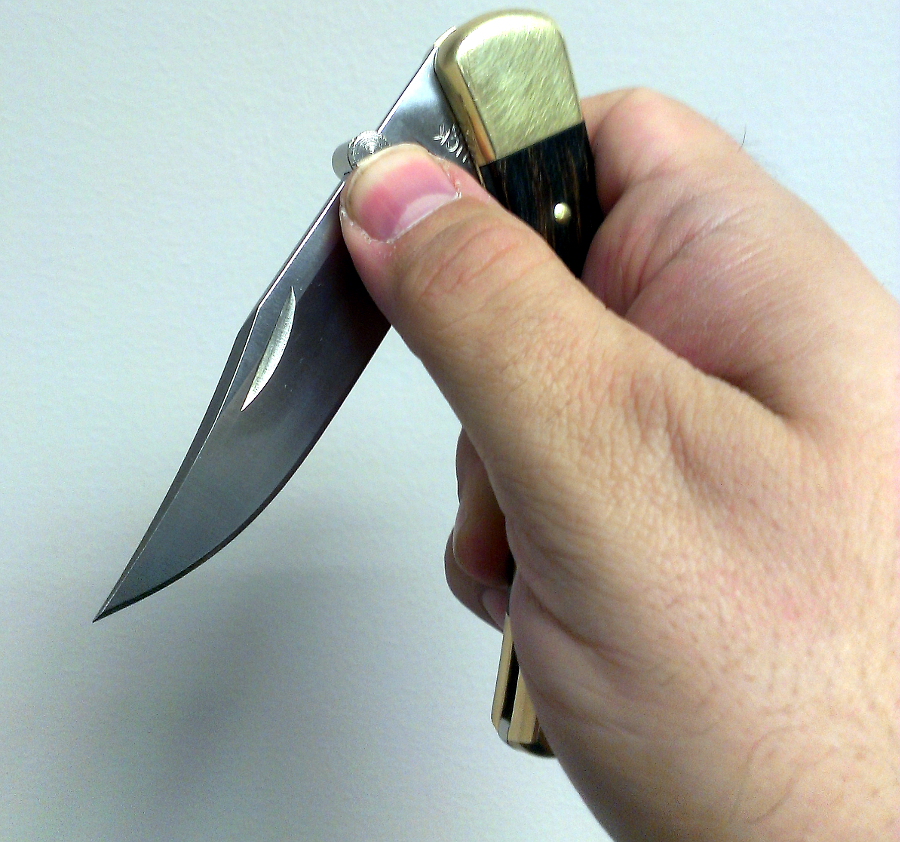
Maybe you’re holding a fishing pole in one hand and need to be able to cut a line with the other. Maybe your handgun is pinned between you and the assailant who is lying on top of you, beating your brains out with his fists, and to save your life you’ve got to cut him to get him off you. In either case, if the knife you are carrying requires two hands to open, it’s of little use to you.
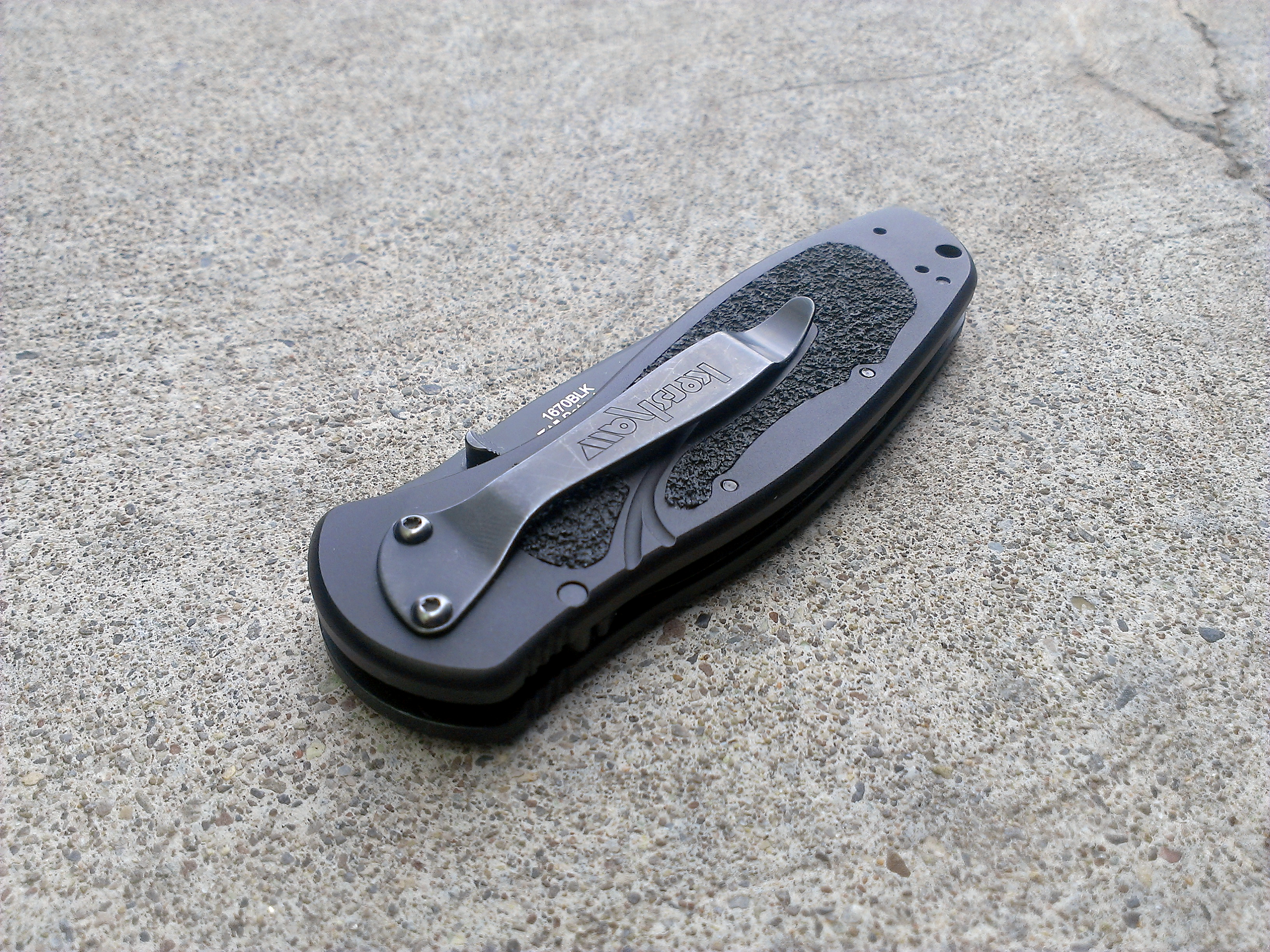
We all have that friend and fellow armed citizen who insists on carrying his pistol with no round in the chamber, “for safety.” When he finds he has only one hand free in a self-defense altercation, that chamber-empty pistol might as well be back in the gun safe at home. The same is true for any knife that requires two hands to deploy.
The Problem with Fixed Blade Knives
The one-hand-opening “tactical folder” is now the industry standard, but this has not always been so. Armed citizens were carrying backup blades well before the market answered the need for a general purpose utility folder that is also suitable for self-defense. Especially in the days before one-hand knives were common, the fixed blade knife might have seemed the best option. To some, it still does. A fixed blade requires no fine motor skills to deploy and is faster to access than a folder.
The problem is that fixed blade knives, whether carried by civilians or by law enforcement and security personnel, are much more likely to be perceived as weapons first. Their presence will color the actions of the citizen who uses one, tainting him as the aggressor because he carried a weapon associated with thugs and criminals. Robert, a highly ranked professional with a Wisconsin security firm, agrees.
“It’s not that the fixed blade is somehow ‘more deadly,’” he told The Martialist, “but rather, that a fixed blade carried in a waistband or on a duty belt has a negative public perception. There are fixed blade ‘cop tools’ that are passable, but a wise citizen will opt for the more discreet option of a folding knife.”
Tricks for Opening the Rocker-Bar Locking Folder
Back in the days when the Buck 110 and knives like it were the standard for the general-purpose daily carry knife, the citizen wanting a backup folder could have any knife he wanted as long as it was a rocker-bar locking folding knife with a blade between three and four inches long. This is a sturdy design, certainly, which is why it has remained with us. But knives of this type aren’t easily opened with one hand.
One method for snapping open a rocker-bar locking folder is to pinch the blade between the fingers and snap the handle down, using inertia and the weight of the handle. While relatively easy to do, this requires the user to reposition his or her grip after opening (and necessitates handling the knife by its blade, which is not the safest method). With many knives it is possible to grip the handle and use a strong flick of the wrist to snap the blade open using centripetal force.
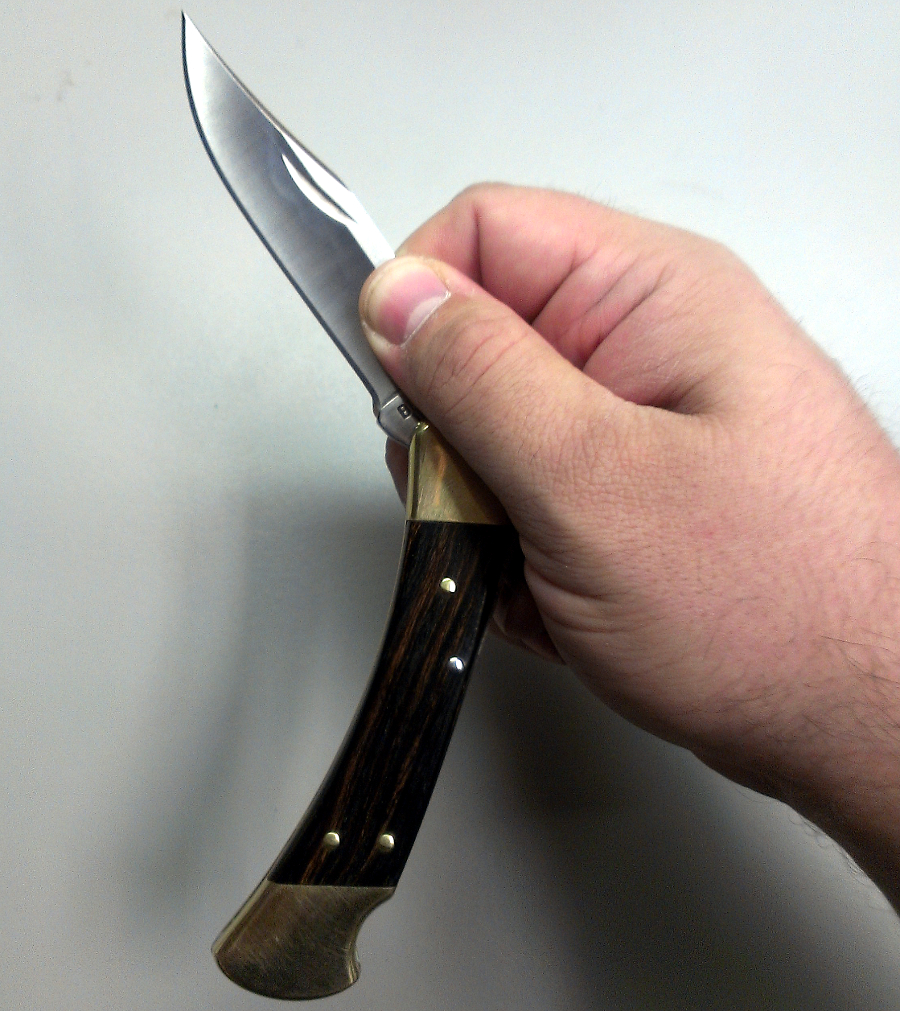
The problem with both inertial methods, though, is that in the stress of an emergency or self-defense situation, chances are good you’ll end up throwing your knife across the room or dropping it at your feet. There is simply too much fine motor control required to use these techniques under stress. The market responded with devices like the quick-draw sheath, the Flicket and the One-Armed Bandit.
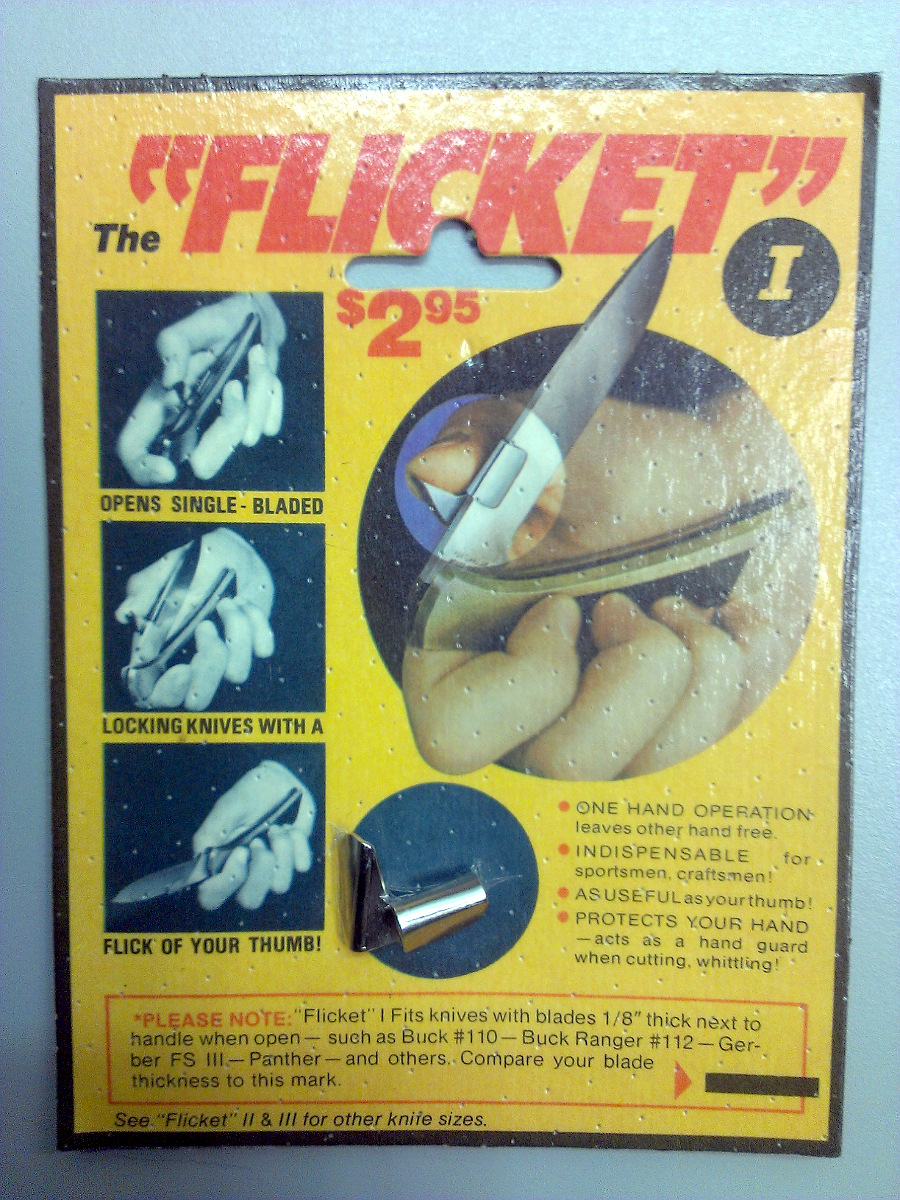
For years, multiple makers offered, and still do offer, leather sheaths intended to hold a folding knife partly open. Some of the better examples of these are today available through the website www.quickdrawsheath.com, which offers multiple styles and colors.
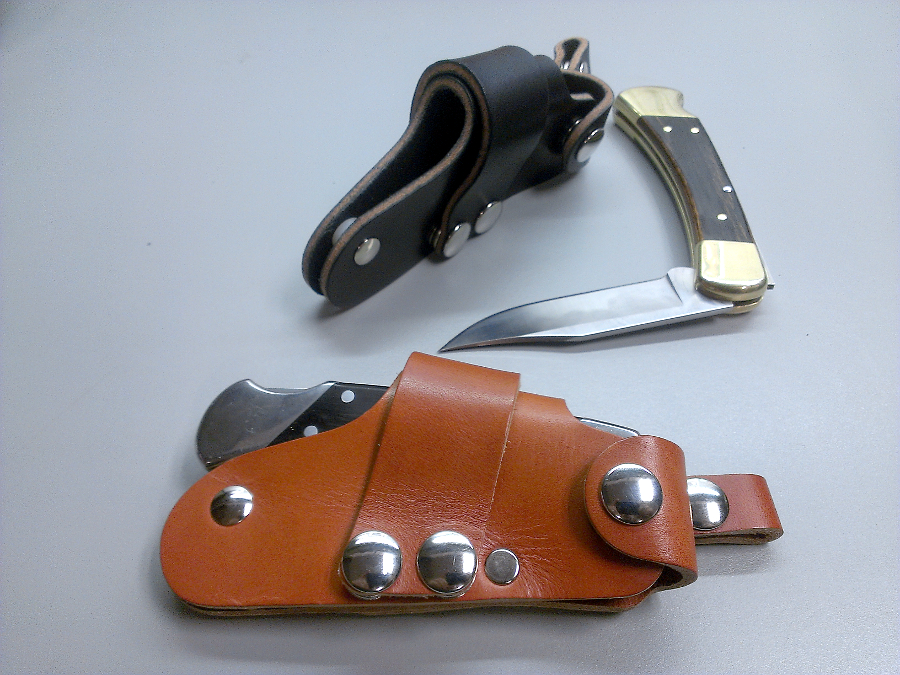
Each sheath uses plastic column to hold the blade open within the leather sheath, allowing the user to pull the blade open when drawing the knife. This is a variation on an old technique used with folding pocket stilettos, in which a folded matchbook was used to wedge the blade open. The blade would be dragged open on the pocket (with predictably serious wear and tear on the fabric of one’s pants).
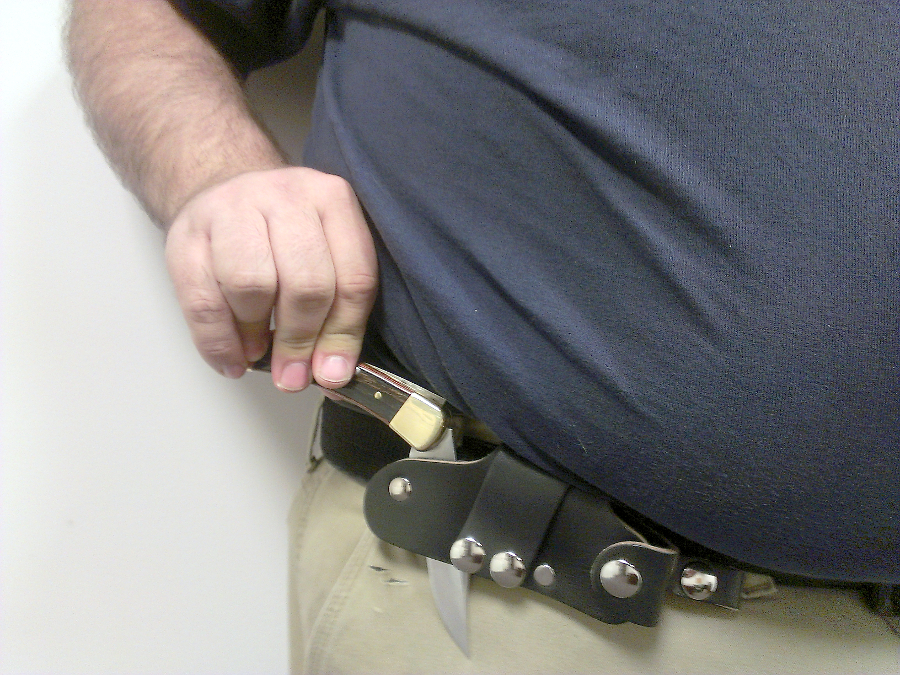
Mike Janich, noted knife instructor and the Special Projects Coordinator for Spyderco, Inc., remembers the early days of one-hand knives well. “I started carrying one-hand opening knives in the mid-1970s,” he told The Martialist. “My first one was a Gerber Folding Sportsman II fitted with a ‘Flicket,’ a spring-steel device that had to be drifted onto the spine of the blade to offer a lever for thumb opening.”
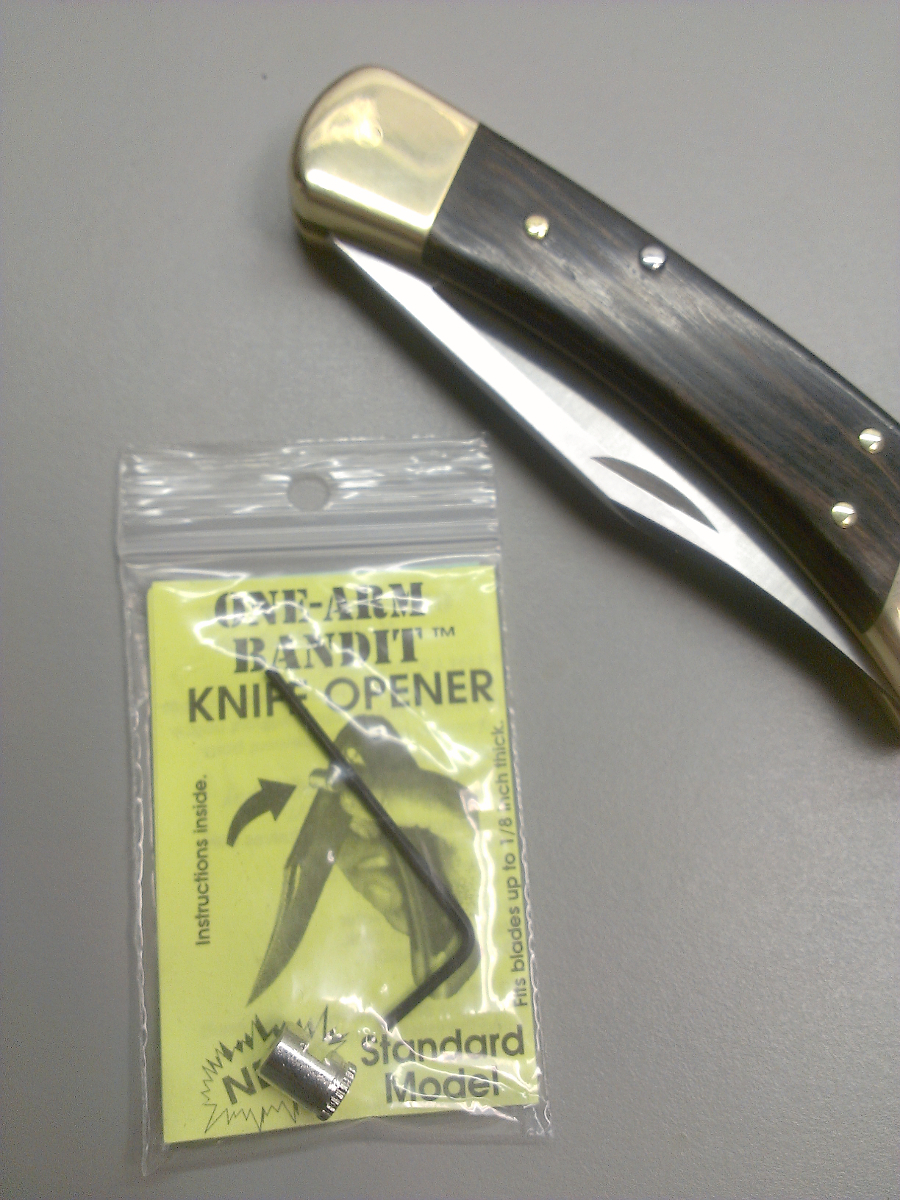
In the years that followed, the One-Armed Bandit became common. This is a screw-on thumb stud that is much easier to install and less obtrusive than the Flicket. Its purpose is the same; it provides purchase for the thumb and allows the knife to be opened with just one hand. The One-Armed Bandit was soon eclipsed, however, by what Janich calls “purpose-designed” one-hand openers, including the groundbreaking Spyderco folders, the first to include the company’s trademark round opening hole in conjunction with a pocket carry clip.
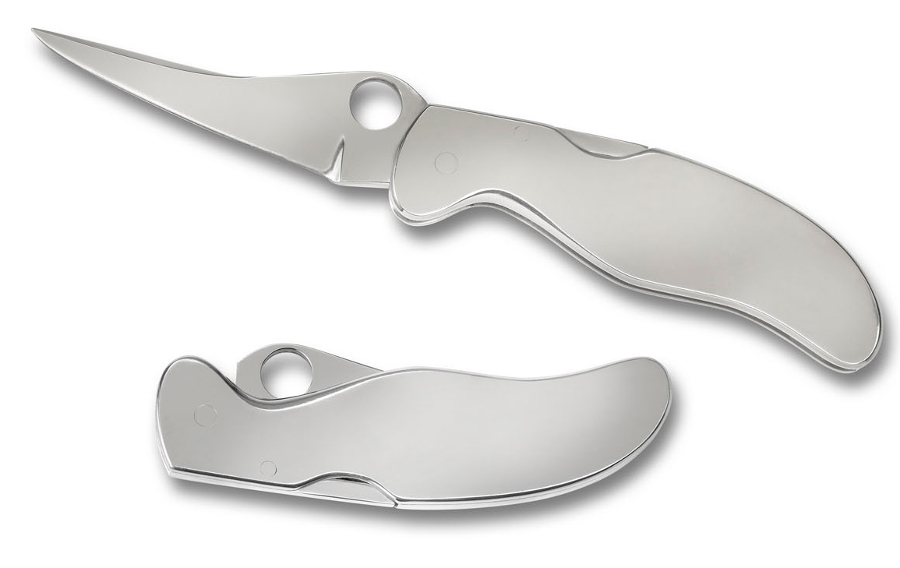
The Purpose-Built One-Hand Folding Knife
“When purpose-designed one-hand openers became available,” explains Janich, “I carried, collected, and experimented with them all. After years of daily carry and use of virtually every type of one-hand-opener available, I am convinced that the Spyderco Round Hole is still the simplest and most versatile opening device available. The round hole offers a much larger surface area and a more easily indexed ‘purchase’ than thumb studs, disks, or other devices. It therefore offers more positive and reliable performance, especially under stress.”
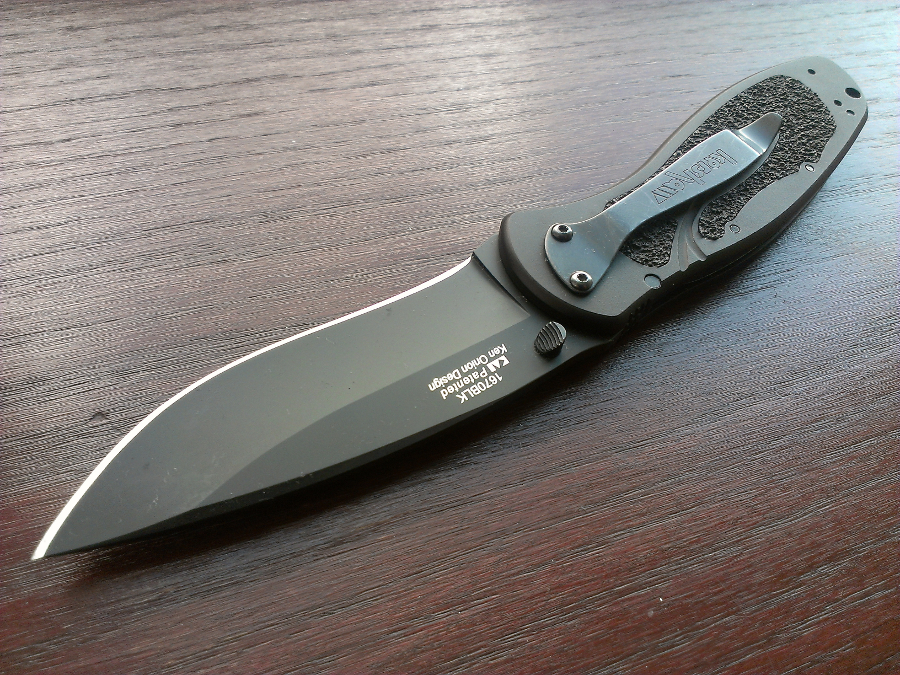
The modern “tactical folder” today offers a pocket clip for discreet, versatile carry, a non-slip handle, and a built-in stud, disk, or other opening method, most of which provide purchase for the thumb. Non-thumb mechanisms include the Emerson Wave, which is licensed and used prominently on some Spyderco and Fox knives. This is a blade hook that catches the pocket and pulls the blade open when it is drawn.

(The wide blade disk on some knives, such as the Cold Steel Spartan shown here, can also be used as an ad hoc Wave, and works in the same fashion.)
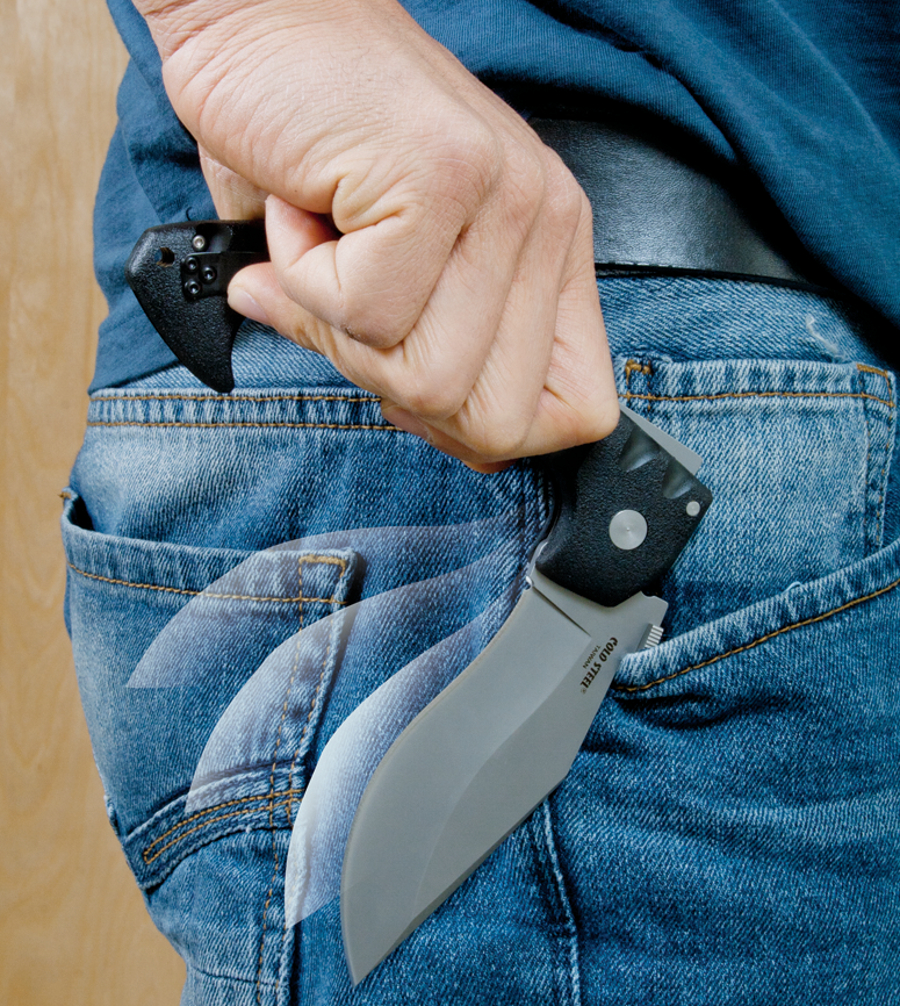
Still another licensed mechanism, the Carson Flipper, has been available on Columbia River Knife and Tool knives for some time and is now offered for the first time by Spyderco in its Southard folder. The flipper is a protrusion at the base of the blade that projects from the rear of the handle when the knife is closed. A firm swipe of the flipper will open the blade. An ancillary benefit is that the flipper protects the fingers should the lock fail during gross abuse of the knife.
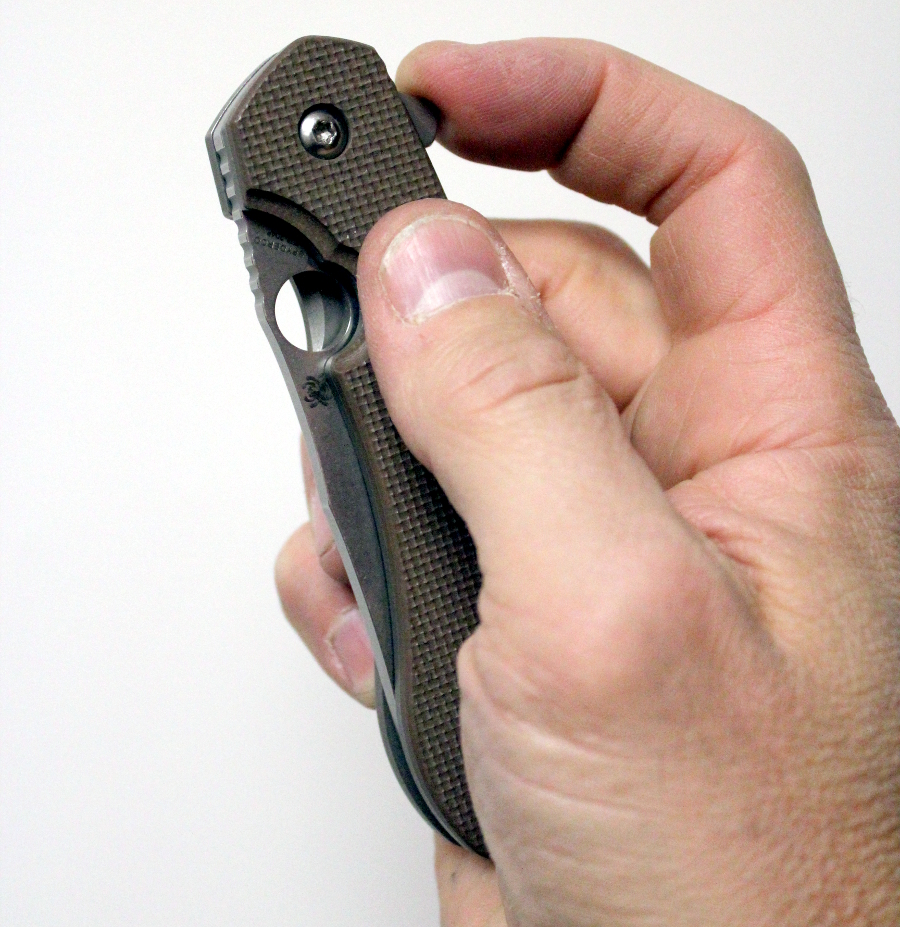
One-Hand Knives Today
The citizen, security professional, or law-enforcement officer today does not have to rely on physical tricks or aftermarket gadgets to open a knife with one hand. The market is flooded with tactical folders boasting modern features. Whether hole, stud, disc, flipper, or hook, with or without a pocket clip, regardless of handle inlays or blade coatings, the one-hand folding knife is a viable option for many armed citizens. Whether as primary or backup, it should be considered and carried accordingly.
What is the name or brand of the knife pictured above ” 1 hand knives today” directly above this comment box? I would like to buy one.
Thank you,
Bob Carson